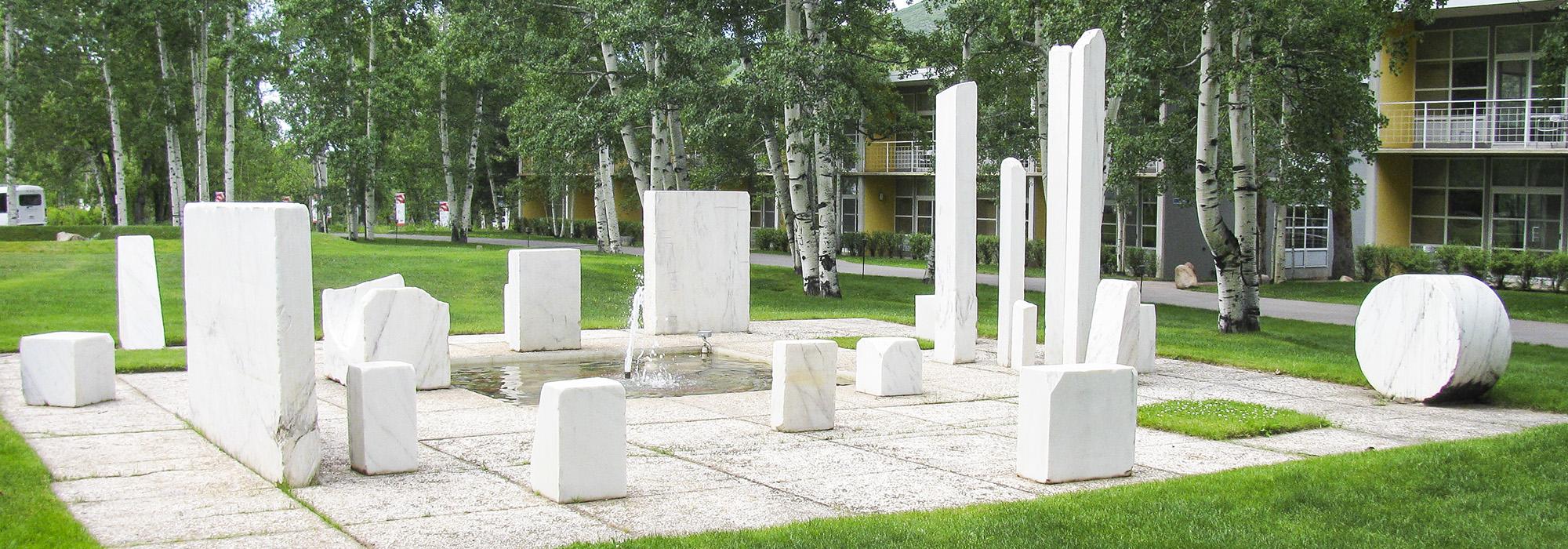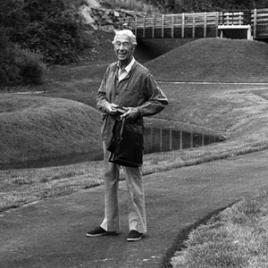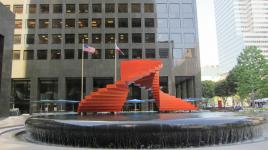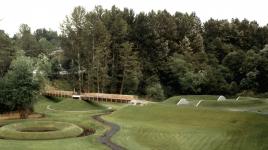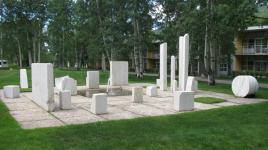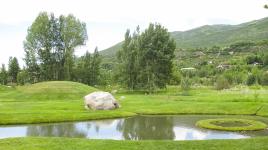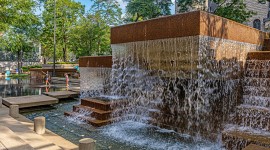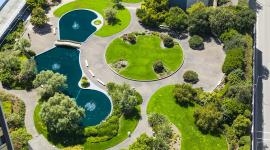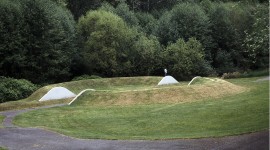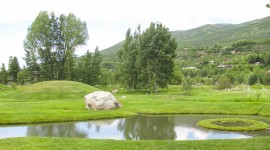Pioneer Information
Born in Haag, Austria in April, 1900, Bayer was accepted into Germany’s Bauhaus in1921, where he embraced the school’s philosophy of functional design. Immediately apparent was his cross categorical facility with all varieties of design, including painting, photography, typography, and graphic design.
In the mid 1940s, Bayer moved to Aspen, Colorado, where he remained until 1974. Important work from this era includes the design of the Aspen Institute for Humanistic Studies: Marble Garden, which consisted of a series of up-ended marble slabs set onto a plinth, and the adjacent Earth Mound (also called Grass Mound), dubbed by Jan van der Marck as “the first instance on record of landscape as sculpture.”
Bayer’s final environmental work, Mill Creek Canyon Earthworks Park in Kent, Washington, combined the sculptural vocabulary of his Aspen projects with ecological functionalism. The two-and-a-half-acre site was designed to retain stormwater from the eponymous watercourse as it flowed down through a tight canyon. A series of berms, mounds, and excavated rings provided sculptural interest for viewers as they meandered through the composition. Mill Creek Canyon Earthworks Park is Bayer’s most acclaimed work due largely to its successful resolution of two perceived competing interests: art and ecology.



